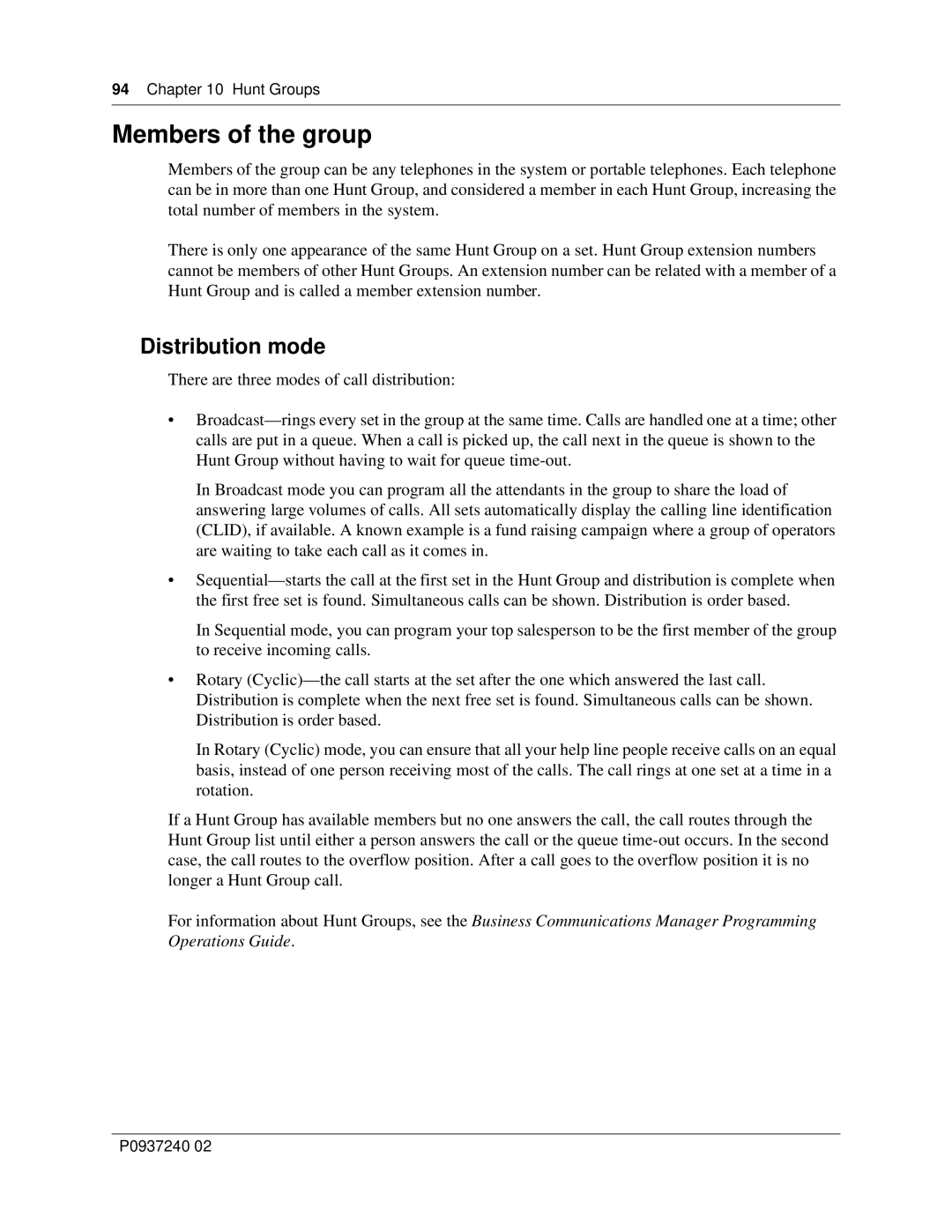
94 Chapter 10 Hunt Groups
Members of the group
Members of the group can be any telephones in the system or portable telephones. Each telephone can be in more than one Hunt Group, and considered a member in each Hunt Group, increasing the total number of members in the system.
There is only one appearance of the same Hunt Group on a set. Hunt Group extension numbers cannot be members of other Hunt Groups. An extension number can be related with a member of a Hunt Group and is called a member extension number.
Distribution mode
There are three modes of call distribution:
•
In Broadcast mode you can program all the attendants in the group to share the load of answering large volumes of calls. All sets automatically display the calling line identification (CLID), if available. A known example is a fund raising campaign where a group of operators are waiting to take each call as it comes in.
•
In Sequential mode, you can program your top salesperson to be the first member of the group to receive incoming calls.
•Rotary
In Rotary (Cyclic) mode, you can ensure that all your help line people receive calls on an equal basis, instead of one person receiving most of the calls. The call rings at one set at a time in a rotation.
If a Hunt Group has available members but no one answers the call, the call routes through the Hunt Group list until either a person answers the call or the queue
For information about Hunt Groups, see the Business Communications Manager Programming Operations Guide.
P0937240 02
